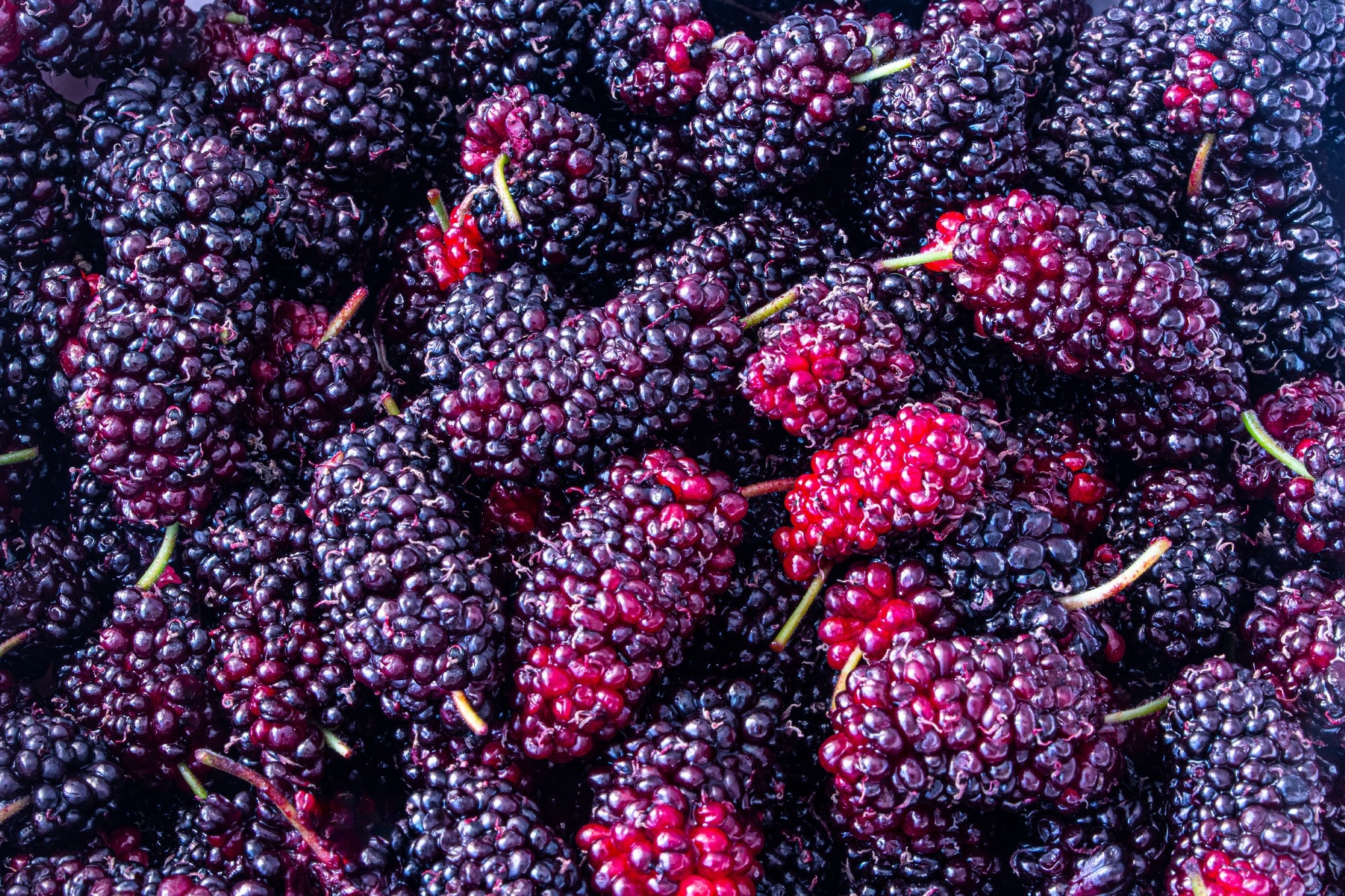A review of molecular mechanisms and preclinical evidence positions mulberry extract as a promising candidate for male infertility treatment.
Study: Molecular Mechanisms and Therapeutic Potential of Mulberry Fruit Extract in High-Fat Diet-Induced Male Reproductive Dysfunction: A Comprehensive Review. Image Credit: AbraSa/Shutterstock.com
In a recent study published in the Nutrients, a group of researchers evaluated the therapeutic potential and molecular mechanisms of mulberry (Morus alba L.) fruit extract in reducing high-fat diet (HFD)-induced male reproductive dysfunction through a comprehensive analysis of current evidence.
Background
The global obesity epidemic has significantly impacted male fertility, with obese men often showing reduced sperm concentration, altered testicular morphology, and impaired spermatogenesis. High-fat diets exacerbate these issues by inducing oxidative stress, inflammation, and hormonal imbalances, further disrupting reproductive health.
Current treatments for obesity-related infertility are limited, necessitating alternative approaches. Mulberry fruit extract, rich in bioactive compounds such as anthocyanins and polyphenols, has demonstrated antioxidant and anti-inflammatory properties, potentially reducing these effects.
However, further research is needed to establish standardized protocols, explore long-term efficacy, and fully clarify its mechanisms in combating obesity-related male reproductive dysfunction.
About the study
A detailed literature search was performed using PubMed, Web of Science, Scopus, and Google Scholar to identify studies exploring the effects of mulberry fruit extract on male reproductive dysfunction caused by HFD-induced conditions. Keywords were structured into three categories: intervention terms (e.g., “mulberry,” “Morus alba”), condition terms (e.g., “high-fat diet,” “obesity”), and outcome terms (e.g., “male infertility,” “spermatogenesis”).
Articles were included if they were in English, published between 2005 and 2024, and addressed Mulberry’s impact on male fertility under HFD-induced conditions. Foundational studies published prior to 2005 were reviewed selectively for context.
The search followed a two-phase process: initial screening of titles and abstracts to exclude irrelevant studies, followed by full-text review for methodological rigor and relevance. Reference lists of selected studies were manually searched to identify additional relevant research.
Inclusion criteria focused on studies that examined the effects of mulberry fruit extract on male reproductive health, including those utilizing animal models, cell cultures, or clinical trials. Only peer-reviewed original research or systematic reviews were considered.
Exclusion criteria omitted studies on female fertility, non-fruit extracts, non-peer-reviewed articles, conference abstracts, non-English publications, and those lacking methodological transparency or quantitative results.
Data extraction was conducted independently by reviewers, capturing study design, sample characteristics, intervention specifics, reproductive outcomes, mechanisms of action, and statistical results. Discrepancies were resolved through discussion.
Findings were synthesized narratively and quantitatively where applicable, ensuring methodological rigor and consistency.
Study results
Analysis of the interaction between HFD, reproductive dysfunction, and mulberry extract therapy highlights a complex interplay of structural, molecular, and systemic mechanisms. HFD consumption is strongly linked to male reproductive dysfunction, affecting testicular morphology, hormonal balance, and sperm parameters.
Structural changes include reduced seminiferous tubule diameter, compromised Sertoli cell-germ cell junctions, and diminished Leydig cell populations essential for testosterone production. These alterations are compounded by oxidative stress, increased reactive oxygen species, and chronic inflammation, which disrupt spermatogenesis and damage sperm Deoxyribonucleic Acid (DNA).
Hormonal imbalances, including decreased testosterone and potential leptin resistance, further impair reproductive health. Epigenetic changes induced by HFD have transgenerational effects, underscoring the long-term consequences of dietary patterns on fertility.
Mulberry fruit offers therapeutic potential due to its rich phytochemical profile, including anthocyanins, polyphenols, and 1-deoxynojirimycin, which exhibit antioxidant, anti-inflammatory, and metabolic regulatory properties.
These compounds improve reproductive outcomes by reducing oxidative stress, enhancing mitochondrial function, and modulating inflammatory pathways. Mulberry extract preserves testicular structure, maintaining seminiferous tubule integrity and blood-testis barrier function. It significantly improves sperm concentration, motility, and morphology, aligning with systemic benefits like improved metabolic parameters.
Molecular studies reveal that mulberry extract modulates key pathways such as Nuclear Factor Kappa B (NF-κB), AMP-Activated Protein Kinase/Silent Information Regulator T1 (AMPK/SIRT1), and Nuclear Factor Erythroid 2–Related Factor 2 (Nrf2), effectively reducing inflammation and enhancing antioxidant defenses.
These effects include increased activity of antioxidant enzymes such as superoxide dismutase, catalase, and glutathione peroxidase, along with a significant reduction in lipid peroxidation.
Furthermore, enhanced mitochondrial function contributes to improved sperm motility through increased Adenosine Triphosphate (ATP) production, stabilization of mitochondrial membrane potential, and upregulation of gene expression associated with energy metabolism.
Conclusions
To summarize, this review highlights mulberry fruit extract as a promising therapy for HFD-induced male reproductive dysfunction.
Its rich phytochemical profile, including anthocyanins and polyphenols, offers protective effects by enhancing antioxidant defenses, reducing inflammation, modulating NF-κB signaling, and activating AMPK/SIRT1 pathways. These mechanisms improve testicular morphology, spermatogenesis, and sperm parameters.
Source link : News-Medica

